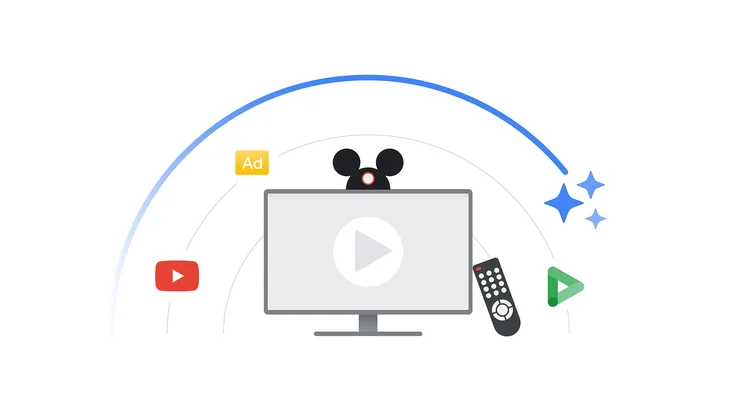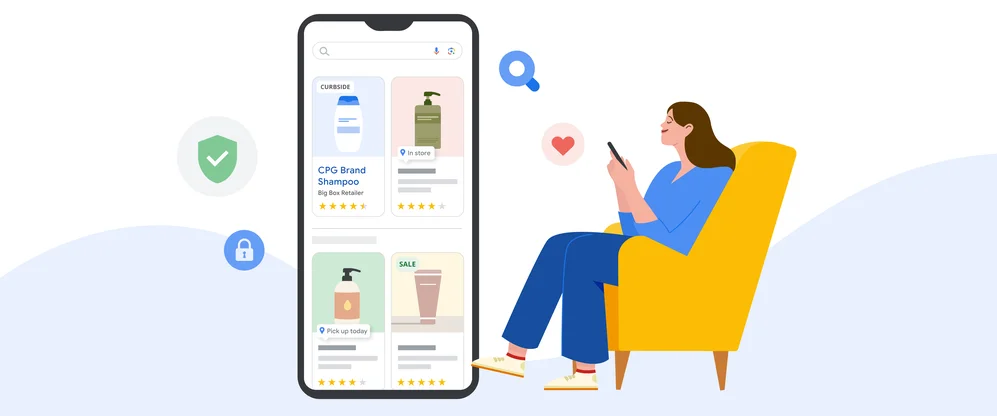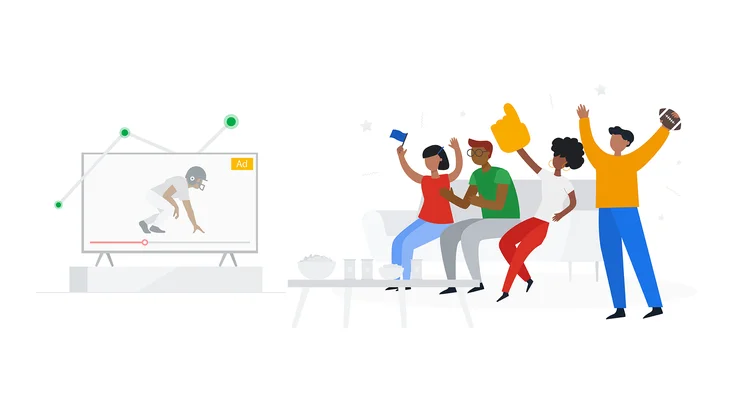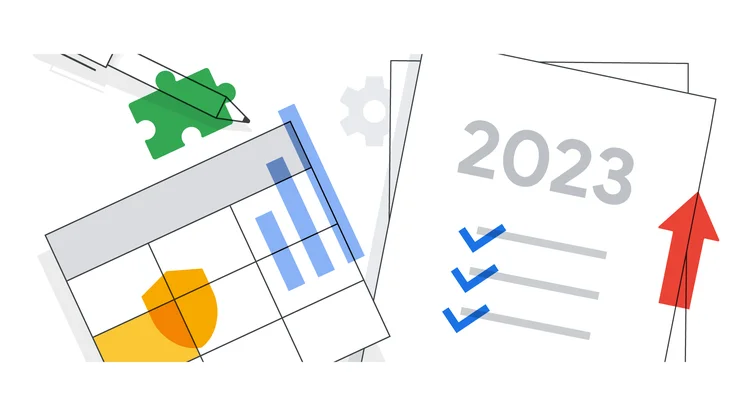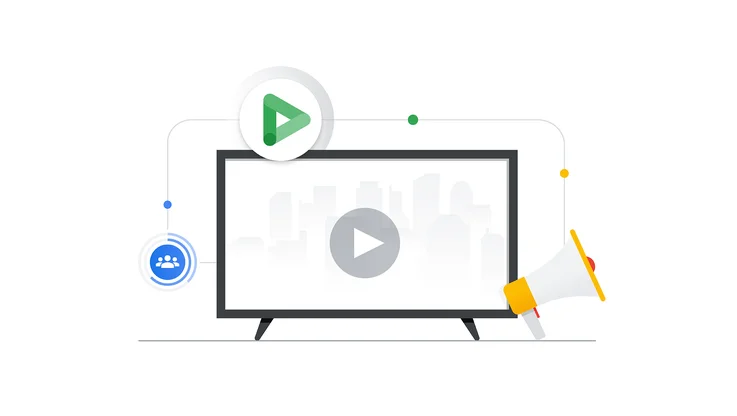10 tips for building better brand campaigns with DoubleClick
Changing viewing habits demand new approaches to marketing
The way we watch TV and video has changed significantly over the last few years. While TV screens still take up 91% of our viewing time,1 we can now watch video content wherever, whenever, and however we want.
While this is great for consumers, it can create complexity for marketers. But there’s also opportunity — you can use data and automation to reach audiences more effectively — wherever they’re choosing to watch.
Here are 10 tips for improving the performance of your DoubleClick brand campaigns to reach today’s always-connected viewers:
Tip #1: Build media campaigns that reach audiences in any digital environment
In 2017, video consumption on over-the-top streaming devices rose 35% year-over-year among adults 18 to 49.2 And according to Nielsen, the average 18-24 year-old spent more than 90 minutes watching video on smartphones in Q2 2017.3 With access to a wide range of premium video inventory in DoubleClick Bid Manager, you can reach your audience in any digital environment where they choose to watch:
YouTube reserve and auction inventory, including Google Preferred and TrueView
Premium broadcasters and publishers, with whom you can negotiate direct deals
Easy-to-buy inventory packs that are hand-curated by content and placement types (e.g. TV content, mobile video placements)
Local, national, and even addressable linear TV spots, via partnerships with Wideorbit, clypd, and Google Fiber
Tip #2: Use advanced segmentation over and above basic demos
Campaigns that segment mobile audiences using intent-based signals have 20% higher ad recall lift, and 50% higher brand awareness lift, compared to campaigns that only use demographic information.4 So, when buying YouTube inventory, you can use intent and interest signals, such as consumer patterns or life stages, to find audiences that are in the right mindset for your brand or product. Across other publisher inventory, you can use audience lists with Programmatic Guaranteed to layer your own audiences onto your negotiated reservation deals.
Tip #3: Ensure your brand shows up on high-quality content and placements
DoubleClick’s fraud and verification reports let you confirm that your ads are shown to real people, and that they show up where you expected them to. DoubleClick uses live reviewers, automatic filters, and machine learning to block invalid and fraudulent activity.
You can also optimize your campaigns to placements that meet the MRC definition for viewability (half of the video ad is in view for at least two seconds) or more stringent requirements (such as viewable on screen for at least 10 seconds), or in view and audible on video completion. These tools can help you control for quality across your campaign.
Tip #4: Build relevant experiences based on real-world events
Try out Real-time triggers in DoubleClick Bid Manager to sync the delivery of digital ads with real-world events, such as TV airings, sports results, or the weather. That way, you can show a message to digital audiences that is relevant to their environment and help them take action on something that is already top of mind.
For example, 80% of sports viewers say they use a computer or smartphone for related activities while watching live sports on TV.5 You can reach this audience by serving digital ads immediately after your commercial airs during a big, televised sports game. You can adjust your awareness message with shorter, mobile-friendly ads
https://www.thinkwithgoogle.com/marketing-resources/youtube-bumper-ads-six-second-storytelling/
that drive people to action.You can also trigger ads based on the weather (e.g., when it starts to rain, serve ads for umbrellas) and sports results (e.g., when a player scores in the game, immediately serve congratulatory ads on all the right devices). That way you can coordinate your campaigns to the moments that matter, when your potential customers are paying attention.
Tip #5: Expand reach to engaged audiences even on non-video content
While people love watching video, they’re also spending a lot of time engaging with non-video content. In fact, news, sports, entertainment, and gaming apps together make up nearly an hour of time spent on mobile every day.6 These audiences can offer opportunities to expand campaign reach beyond your traditional in-stream placements.
You can reach these audiences with out-stream placements — video ads in non-video content, such as in-feed, in-article, and interstitial placements. You can access these placements through direct deals in DoubleClick for Publishers or use the native video format in DoubleClick Bid Manager.
Tip #6: Align metrics with both TV and digital buying teams
TV and digital buying teams often use different KPIs to measure campaign performance, which can make it tough to compare results. If you buy linear TV in Bid Manager, you can align teams on Brand Lift metrics (i.e. search lift) to compare digital video performance — and even linear TV, too. This can help you move beyond reach and frequency proxies to get at the real impact your ads have on brand interest.
Even if your teams aren’t quite ready for that step, you can use TV Ad Explorer to get TV metrics in the same place as your digital reporting. Digital buyers can access reach and airings data for all of a brand’s linear TV campaigns (regardless of where the media is bought). By having the information in one place, you can identify opportunities to complement TV buys with digital media. For example, you can better understand if your TV campaign reached your intended audience, and then plan a digital campaign to adjust that reach.
Tip #7: Understand the impact of your campaigns from awareness to attribution
Research suggests that leading marketers — those who exceeded their top 2016 business goals — are 75% more likely than the mainstream to have moved to a more holistic model of measurement in the last two years.7 DoubleClick offers a full-funnel measurement solution to help you measure your marketing strategies from awareness to attribution.
Use Active View, Unique Reach, and Brand Lift metrics to measure whether people are seeing your messages, how many unique people your campaigns reach, and how your ads drive lift in awareness and perception of your brand. You can also use trusted third-party metrics to validate your campaign results since DoubleClick is integrated with the largest third-party measurement providers.
For lower-funnel measurement, use the attribution solution and offline conversion API in DoubleClick to understand how your advertising campaigns drive online conversions and offline sales lift. This will help you close the loop on the impact your advertising dollars have on bottomline business metrics.
Tip #8: Quickly act on insights to improve campaign performance
Don’t wait until the end of a campaign to tweak strategies. DoubleClick provides fast reporting with uniform metrics for all formats and tactics. You can set up your campaigns to optimize automatically around common goals like viewability or conversions.
Tip #9: Maximize your marketing investment by consolidating ad buying in one tool
Recent research found that brands that consolidated their reservation and open auction ad buys in a single solution like DoubleClick reached 11% more unique consumers for the same impression investment.8 They were also 29% more efficient in their campaign execution (measured in time saved).9 Use Programmatic Guaranteed in Bid Manager to bring your reservation deals into the same tool where you buy auction inventory.
Tip #10: Maintain a learning mindset
In a recent survey conducted by Harvard Business Review Analytic Services, only 30% of respondents said that the marketing professionals in their organizations are “very knowledgeable” about the changing viewing trends and the resulting advertising needs.
But there is a business imperative to staying close to these consumer trends: the “very knowledgeable” businesses are three times as likely to say they’re adapting their strategies to a “great extent” in response to changing viewing trends, compared to their less knowledgeable peers.10
Check out our Marketer's guide to TV and video advertising to learn more about the changes in consumer viewing behavior and ways to adapt your marketing to match.
1. “The Nielsen Total Audience Report”, Nielsen, Q2 2017
2. “TV Trends”, Pivotal Research, Dec. 2017 (data based on consumption for month of Dec. 2017 vs. Dec. 2016)
3. “The Nielsen Total Audience Report”, Nielsen, Q2 2017
4. Google, Brand Lift Targeting Analysis, October 2016 - March 2017
5. Google/Ipsos Connect, Sports Viewing Survey, US, December 2017 (n of 1,520 adults aged 18 to 54 who identify themselves as sports fans. Average across 10 sports).
6. “Appify your campaigns: Reaching customers in apps,” Google, Nov. 2017
7. Econsultancy and Google, Analytics and Measurement Survey, 2016, Base: n=502 marketing and measurement executives at North American companies with over $250MM in revenues / n=132 leading marketers; n=305 mainstream marketers.
8. “Media Consolidation Research,” Nielsen and Google, Q3 2017
9. "A guaranteed opportunity in programmatic advertising," Boston Consulting Group, Feb. 2018
10. “Marketing and the Evolution of TV.” Harvard Business Review Analytic Services Google-commissioned research, Global, Feb. 2018 [390 respondents drawn from the Harvard Business Review audience of readers (magazine/ newsletter readers, customers, HBR.org users) completed the survey.]
